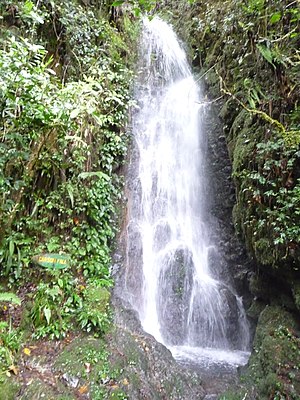 |
| English: The carbon footprint as it is understood by people. (Photo credit: Wikipedia) |
what is the definition of greenhouse effect?
According to the Carbon Footprint calculator, the national average for the US is 7.5 tons per year. My annual carbon footprint is 10.76 metric tons of carbon dioxide. Half of my carbon footprint comes directly from commuting. I have a fuel efficient, commuter car. However, traveling 90 minutes per day puts a significant impact on my footprint. The other portion, at 4.67 tons per year, is the food I eat, the clothes I wear, and the other items I purchase. My electricity is small in comparison, only at 0.8 tons per year.
It looks like the only way to reduce my carbon footprint is to move closer to work, or move work closer to home. The commuting is a significant factor however it was the only place to find work at that time. Also, if I had the opportunity and a garden to grow my own vegetables, I would be able to reduce my carbon footprint a little bit. My fiancée’s mother has her own garden out of choice for fun, but the secondary impact is she is reducing her carbon footprint. Most years we also get many vegetables from her, as her garden is often fruitful.
In trying to manipulate the calculator by altering my inputs, I find that the miles driven significantly impacts my carbon footprint, while changing the type of car I drive does not make much of a difference. Also, by purchasing local products changes my footprint, as it costs less to move products when they are closer to the consumers.
According to the Climate Crisis webpage, my carbon footprint is only 1.05 tons per year, compared to the previous estimate from the Carbon Footprint webpage. There are many simple ways to reduce my carbon footprint. Some of them include replacing regular light bulbs with the energy efficient CFL ones, purchasing energy efficient appliances when they are being replaced, and planting a tree. There are more complicated ways to minimizing my footprint, such as buying locally owned and produced foods, use a clothesline when possible, and avoiding heavily packaged products.
The simple changes are already being implemented in our home. However, the more difficult ones are difficult because they are out of my hands. Purchasing local goods is very difficult, because I live in a major city area and almost everything has to be transported in. Also, using a clothesline is impossible because we do not have a backyard to put one in. And third, it is difficult to avoid the heavily packaged products because often times things are sent and we have no idea what kind of packaging they will come with. The only thing we can do about that is ensuring we are recycling or reusing that packaging
References:
Carbon Footprint. 2010. “Carbon Footprint Calculators.” Internet:
Publishing: San Francisco, 2009.
See:
carbon trust
define environmental footprint
ecological footprint definition
carbon taxes

























